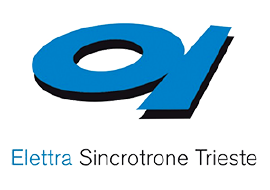MOKE1 - MBE CLUSTER
MOKE apparatus is present on the MBE Cluster growth system. In this setup it is possible to perform MOKE in the longitudinal configuration and to record hysteresis loop measurements both in vacuum and on air. In this system (figure) polarized light impinges on the sample located between the poles of the electromagnet. The reflected light passes through the analyzer optical lens, which is set close to extinction. The signal is then detected by a photodiode; the current signal finally passes through a lock in amplifier, giving the Kerr signal of the sample. The optical components are mounted on an optical table. The sample on the head of the UHV manipulator can be cooled down to 5K (He flow cryostat) and stabilized by feedback at any temperature between 5K and 500K. The azymuthal angle can be varied by 360 degrees (around an axis perpendicular to the surface) enabling the measure of in-plane magnetic anisotropy. The physical dimensions of the Ti-UHV insert chamber limits the electromagnet gap to an effective field of 0.58 T on the sample. Reducing the gap in air allows to measure off-situ samples with H fields up to 0.8 T. Two sets of lasers and detectors allow working at 635 (red) and 405 (blue) nm wavelengths.


MOKE2 - SURFACE LAB
Other MOKE systems are available also at the Surface and Nano Science Lab. Three different types of magnets are installed in the UHV chamber. One magnet is set so as the transversal MOKE measurements can be performed during the growth of epitaxial thin films with e-beam evaporators. Its maximum magnetic field is 60 mT. The second magnet is for the polar MOKE measurement, and the maximum available magnetic field is 0.3 T. The third magnet is composed of three orthogonally placed non-core coils, which allow magnetizing samples along any direction for MOKE measurements. For all configurations, the sample temperature can be varied from 200K to 650K. The laser beam is first polarized with a polarizer and then focused (100 µm) on the sample with a lens; the reflected beam intensity is then measured with a photodiode. For longitudinal and polar MOKE measurements, an analyzer is installed in front of the detector. No modulation technique is applied but a low pass filter in order to remove 100 Hz noise.












